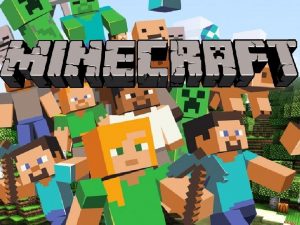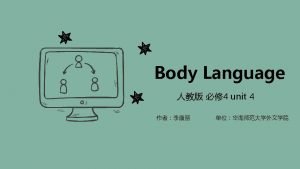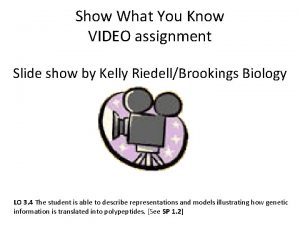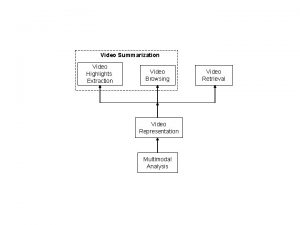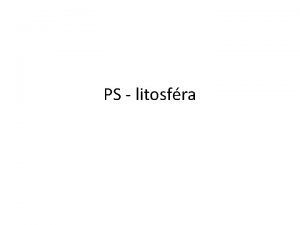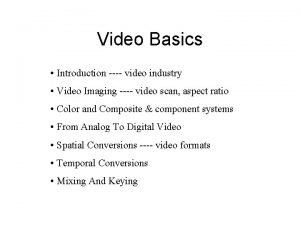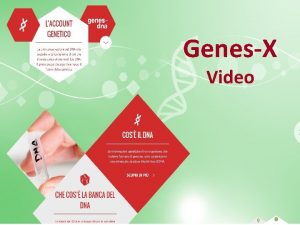Show What You Know VIDEO assignment Slide show







- Slides: 7

Show What You Know VIDEO assignment Slide show by Kelly Riedell/Brookings Biology LO 3. 4 The student is able to describe representations and models illustrating how genetic information is translated into polypeptides. [See SP 1. 2]

SP 2. A Describe characteristics of a biological concept, process, or model represented visually SP. 2. B Explain relationships between different characteristics of biological concepts, processes, or models represented visually a. In theoretical contexts. b. In applied contexts. SP 2. C Explain how biological concepts or processes represented visually relate to larger biological principles, concepts, processes, or theories. SP 2. D Represent relationships within biological models, including b. Diagrams.

LEARNING OBJECTIVE IST-1. N Describe the mechanisms by which genetic information flows from DNA to RNA to protein. ESSENTIAL KNOWLEDGE IST-1. N. 1 The sequence of the RNA bases, together with the structure of the RNA molecule, determines RNA function— a. m. RNA molecules carry information from DNA to the ribosome. b. Distinct t. RNA molecules bind specific amino acids and have anti-codon sequences that base pair with the m. RNA. t. RNA is recruited to the ribosome during translation to generate the primary peptide sequence based on the m. RNA sequence. c. r. RNA molecules are functional building blocks of ribosomes. IST-1. N. 2 Genetic information flows from a sequence of nucleotides in DNA to a sequence of bases in an m. RNA molecule to a sequence of amino acids in a protein. IST-1. N. 3 RNA polymerases use a single template strand of DNA to direct the inclusion of bases in the newly formed RNA molecule. This process is known as transcription. IST-1. N. 4 The DNA strand acting as the template strand is also referred to as the noncoding strand, minus strand, or antisense strand. Selection of which DNA strand serves as the template strand depends on the gene being transcribed. IST-1. N. 5 The enzyme RNA polymerase synthesizes m. RNA molecules in the 5’ to 3’ direction by reading the template DNA strand in the 3’ to 5’ direction. IST-1. N. 6 In eukaryotic cells the m. RNA transcript undergoes a series of enzyme-regulated modifications— a. Addition of a poly-A tail. b. Addition of a GTP cap. c. Excision of introns and splicing and retention of exons. d. Excision of introns and splicing and retention of exons can generate different versions of the resulting m. RNA molecule; this is known as alternative splicing.

LEARNING OBJECTIVE IST-1. O Explain how the phenotype of an organism is determined by its genotype. ESSENTIAL KNOWLEDGE IST-1. O. 1 Translation of the m. RNA to generate a polypeptide occurs on ribosomes that are present in the cytoplasm of both prokaryotic and eukaryotic cells and on the rough endoplasmic reticulum of eukaryotic cells. IST-1. O. 2 In prokaryotic organisms, translation of the m. RNA molecule occurs while it is being transcribed. IST-1. O. 3 Translation involves energy and many sequential steps, including initiation, elongation, and termination. IST-1. O. 4 The salient features of translation include— a. Translation is initiated when the r. RNA in the ribosome interacts with the m. RNA at the start codon. b. The sequence of nucleotides on the m. RNA is read in triplets called codons. c. Each codon encodes a specific amino acid, which can be deduced by using a genetic code chart. Many amino acids are encoded by more than one codon. d. Nearly all living organisms use the same genetic code, which is evidence for the common ancestry of all living organisms. e. t. RNA brings the correct amino acid to the correct place specified by the codon on the m. RNA. f. The amino acid is transferred to the growing polypeptide chain. g. The process continues along the m. RNA until a stop codon is reached. h. The process terminates by release of the newly synthesized polypeptide/protein.


• Use the diagram provided and make a video tracing the flow of chemical information from the gene to the protein product. • You must include a description/explanation of everything in the picture. • 2 people in your group • Everyone in group must talk in video • Be sure to include important enzymes • EXTRA CREDIT: Tell TWO more things that might happen to the polypeptide chain produced in the picture before it can function as a protein in or out of the cell.

THINGS TO INCLUDE: • Transcription (location, enzymes, steps) • Pre-m. RNA editing (introns/exons/5’cap/poly. A tail • Exit from nucleus • Translation (location, cell parts, RNA functions, intiation, elongation, termination, codon/anticodon, A, P, E sites) • t. RNA charging • What happens next? (3 D structure, modifications) • Post transcriptional regulation • Post translational regulation




